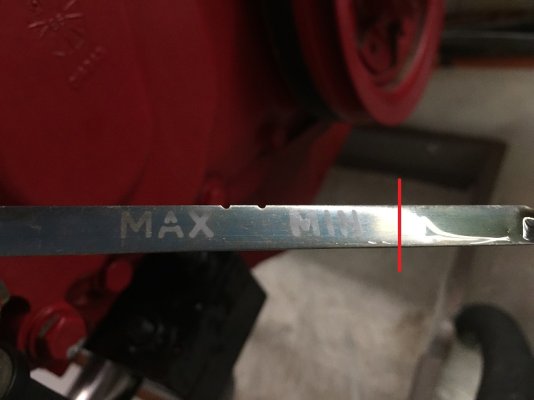firstbase
Guru
- Joined
- Nov 6, 2016
- Messages
- 1,644
- Location
- United States
- Vessel Name
- Black Eyed Susan
- Vessel Make
- Grand Banks 42' Classic
Been running my new to me boat for a couple of months and everything engine-wise has sounded and looked good. Ford Lehamn SP135's which I run at 1500-1700 max. Both engine temps show at 180+- and oil pressure at 55. Port engine always reads a little higher, less than 5 degrees. Yesterday I decided to open it up and check out cooling temps at WOT. When I did the temps went to just under 200 on starboard and 200 on port. Took 3-4 minutes before I got an alarm which I assume was overheat on the port side. Throttled back and in a minute or two alarm cut out, temps dropped to normal and everything back to normal on the 1.5 hour cruise back home.
I assume this was caused by diminished water flow in coolant system as everything returned to normal when I backed off RPM's. Does a RW pump either work or not work, no in-between, for the most part?
Checked coolant levels in overflow tanks and both were fine.
No leaks or anything to note.
Strainers were cleaned 15 hours ago.
Impellers changed 6 hours ago.
New heat exchange/oil coolers, RW pumps 3-4 years ago before previous owner cruised loop and Bahamas.
My thought (inexperienced and little knowledge) is to flush raw water system with Barnacle Buster or similar although I haven't opened HE to see how clean/dirty they are yet. Looking at everything else in and on the boat/engines I believe they will be pretty clean but not sure.
Know this is all simple stuff for you guys and I would think that this situation is pretty normal or frequently heard. Have the standard engine alarms, nothing added. Is there an audible alarm difference between port overheat, starboard overheat or port/starboard oil pressure? Alarm goes off, just figure it out with the gauges?
Thanks for any comments.
I assume this was caused by diminished water flow in coolant system as everything returned to normal when I backed off RPM's. Does a RW pump either work or not work, no in-between, for the most part?
Checked coolant levels in overflow tanks and both were fine.
No leaks or anything to note.
Strainers were cleaned 15 hours ago.
Impellers changed 6 hours ago.
New heat exchange/oil coolers, RW pumps 3-4 years ago before previous owner cruised loop and Bahamas.
My thought (inexperienced and little knowledge) is to flush raw water system with Barnacle Buster or similar although I haven't opened HE to see how clean/dirty they are yet. Looking at everything else in and on the boat/engines I believe they will be pretty clean but not sure.
Know this is all simple stuff for you guys and I would think that this situation is pretty normal or frequently heard. Have the standard engine alarms, nothing added. Is there an audible alarm difference between port overheat, starboard overheat or port/starboard oil pressure? Alarm goes off, just figure it out with the gauges?
Thanks for any comments.
Last edited:


